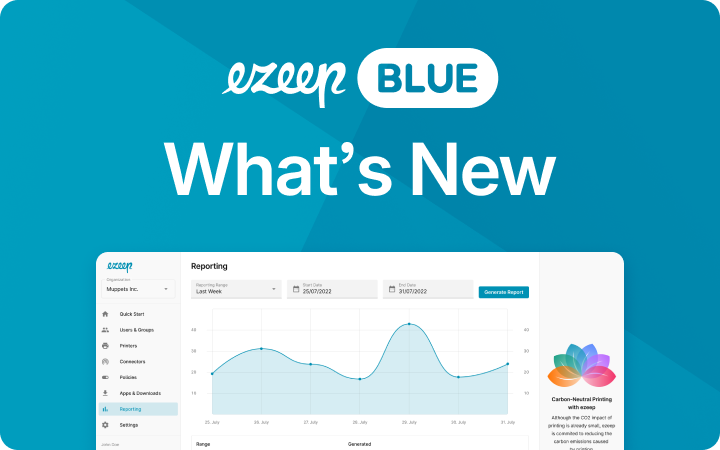New Azure Virtual Desktop Report – Performance Problems Biggest Gripe
The rapid development of home offices has caused the interest in cloud-based desktops to rise. That is precisely what Microsoft offers with its AVD technology (Azure Virtual Desktop): People working from home can access a fully functioning, high-performance Windows desktop via Azure Virtual Desktop, regardless of their actual hardware. The exclusive multi-session capability of the Windows operating system enables dynamic scaling of the resources that are part of the virtual desktop infrastructure (VDI) . Furthermore, this can be used as a backup for on-premises VDI deployments. The following article reflects the key findings of a report by eG Innovations and AVD TechFest on this topic.

Study Perspective & Scope
eG Innovations, based in Iselin, New Jersey, is a provider of application performance monitoring solutions. AVD TechFest is a conference organizer based in the Netherlands. For the report, more than 500 IT professionals were interviewed on the topic of Microsoft Azure Virtual Desktop. Those responses from the beginning of 2022 were then analyzed. The full report includes other useful statistics and facts about Azure Virtual Desktop adoption, including authentication (Azure AD vs. on-premises AD) and FSLogix container usage.
The analysis found that Azure Virtual Desktop has promising growth prospects. 58% of respondents are planning to implement Azure Virtual Desktop within the next two years while 26% are already using it. Only 5% did not see the necessity to implement Azure Virtual Desktop.
Most respondents were from North America (36%), Asia (26%) and Europe (19%). It is worth noting that 73% of all concerned AVD projects have fewer than 1000 users.
Common Problems in Azure Virtual Desktop
Most participants were concerned about usability (22%), the cost of cloud services (22%), and overall security (16%). However, the authors of the study note that the security concerns gathered from IT professionals are generally low. Overall, the security confidence in the Azure virtual desktop services is high.
The biggest complaint was about poor performance, based on slow execution. This was mentioned by almost half of all participants (47%). Furthermore, they reported slow logins (40%), problems with video calls (31%), a lack of support for USB devices (31%), and increased keystroke latency (28%). The authors argued that latency, login, multimedia playback and other problems are caused by infrastructure levels and not the digital workspace, which is why they suggest an end-to-end monitoring approach for such issues.
Almost half the respondents (48%) wished for end-to-end monitoring of Azure Virtual Desktops with session hosts, additional layers of control and Microsoft Entra ID. IT pros considered a console to monitor Citrix, VMware and Azure Virtual Desktop (43%). Usually, monitoring was done with a combination of Azure Log Analytics and Azure Monitor (54%). 46% of respondents said they used either Citrix or VMware tools.
Although the Microsoft Azure Monitor tool is a popular choice for these purposes, it presented the users with some difficulties. They found it too expensive (30%) and the costs hard to estimate (30%). Another 26% of respondents disliked configuring alerts manually, and 21% would welcome pre-built dashboards. Furthermore, 19% of respondents complained about writing Kusto queries (SQL-like query language) for reports.
Typical Usage of Azure-Virtual-Desktop
Most participants used Microsoft’s Azure for Azure Virtual Desktop services, but 34% instead used Citrix VDAs on Azure. Those using Citrix and VMware solutions tended to have more Azure Virtual Desktop end users.
The most popular Azure Virtual Desktop storage option (49%) was the Windows File Server. That was followed by Azure Files at 32% and Azure NetApp Files at 13%.
The most preferred virtual devices for Azure Virtual Desktop are the ones with 4 vCPU, and 16GB RAM as well as the ones with 8 vCPU, and 16GB RAM.
The authors considered it striking that most respondents used laptops (72%) and PCs (60%) instead of thin clients (39%) with the Azure Virtual Desktop (AVD) service.
In addition, many participants (61%) used graphic processing units (GPUs) for acceleration and improved rendering. The authors judged this to be an interestingly high percentage as the overall percentage of Azure types using GPU support is low.
Among the surveyed IT pros, most used the Microsoft Virtual Desktop Optimization tool to create AVD images (38%). Other notable tools were the Citrix Optimizer (19%) and VMware OSOT (18%). According to the study, the preferred management tool was Microsoft’s FSLogix.
Specified authentication methods included Active Directory plus Azure Connector (50%), Microsoft Entra ID Domain Services (18%), Azure VM Domain Controllers (14%) and Azure AD joined VMs (7%). However, 11% could not comment on this.
The authors explained that using Active Directory in combination with Azure Connector required monitoring components to optimize user login times. They also pointed out that organizations typically used Microsoft Entra ID Domain Services to support legacy applications in the cloud with outdated authentication methods. Automation and scripting solutions found included GitHub (31%), JSON scripts (22%), Terraform (20%), WVD Admin (18%) and Nerdio (17%). Project Bicep, a Microsoft favorite, was barely used by respondents with Azure Resource Manager templates (3%).
Other Findings
To the surprise of the authors, 80% of respondents did not consider Azure Virtual Desktop to be the only option for a digital workspace. The survey looked at trends in Azure Virtual Desktop usage and found that other remote desktop solutions used alongside Azure Virtual Desktop were the following: Microsoft RDS (Remote Desktop Services) (43%), Citrix Cloud (31%), Citrix Virtual Apps (31%), VMware Horizon (30%) and Amazon Workspaces (21%). The choice herby depends on the needs and wishes of the concerned company.
ezeep Blue – Delivering Improved AVD Performance
While there are many benefits to be gained by using Azure Virtual Desktop, performance issues were a common complaint. One recurring performance issue was also printing. Printing issues were reported by 21% of participants.The reason for this is that printers and desktops are typically close together, making printing a local service. This means that the selection of the appropriate drivers and the printer, as well as the available bandwidth, are usually rather unimportant.
If the application or even the desktop is being virtualized, printing will no longer work as usual. To be able to continue printing, suitable drivers for the corresponding printers must be available on the matching server. If this is not the case, problems will occur during printing. This is also the case when using a printer in combination with the Azure Virtual Desktop.
Because it is no longer possible to assign printers via visual contact, a central management system is required. In addition, the connection setup for other services works differently than for printing. For example, the remote workstation normally accesses the data center, but for printing, the connection originates on the server-side. Therefore, the process becomes complicated.
This printing dilemma is particularly problematic at work. The survey found that to improve the end-user experience, many were investing in supplementary technologies. One approach to simplify printing with the Azure Virtual Desktop is ezeep.
ezeep Blue is a cloud printing solution and is specifically optimized for everyday office use. It delivers up to 5-times faster printing and offers almost universal compatibility with existing printer models and functions. A solution for any number of printers can be scaled by the IT department via an admin portal. After that, printers can be easily managed from one platform.
ezeep is available on our website for free and is fully integrated within Microsoft Entra ID. A special ezeep feature is the rendering process in the cloud. Thus, neither printer drivers nor Windows machines are needed on site. Printers will always remain local, but this solution removes the necessity of a direct assignment of printers to workstations. Users can now print from anywhere and choose the output device by themselves.
How ezeep Blue Works
After integrating the ezeep Print App on the Azure Virtual Desktop and configuring the ezeep Connector App, users can print regardless of whether they are accessing it via the browser or the Remote Desktop App.
Customized rules allow users to see matching printers in their Azure Virtual Desktop session. Print jobs are automatically compressed in the ezeep cloud and transferred encoded to the connector. By connecting the print jobs of the cloud to the physical print infrastructure, ezeep can be used to print anywhere on any printer.
ezeep also offers two features that improve security in your company. These are strong multi-factor authentication and zero-trust printing. The latter allows users to print even in highly segmented networks by using the ezeep Hub.
Furthermore, the cloud printing solution can also be combined with a pull printing solution. In this case, printing only takes place if the user authenticates himself locally, for example by scanning a QR code. This method does not only allow a secure printing process but extends to the output since documents can only be picked up by an authenticated person. All these features make ezeep the best choice to enable secure printing.
Thanks to the Printer Profiles feature, ezeep Blue offers default printer settings in the virtual desktop session for users. This allows access to a wide range of printer settings, which is not the case with the MIcrosoft’s default printer redirection. In addition, monitoring and reporting features are are useful tool for admins and a whole host of third party integrations, such as Zapier and Make, ensure that ezeep Blue is fit for virtually any use case.

Azure Virtual Desktop Printing Solutions
Learn more about which solutions ezeep Blue offers your enterprise
